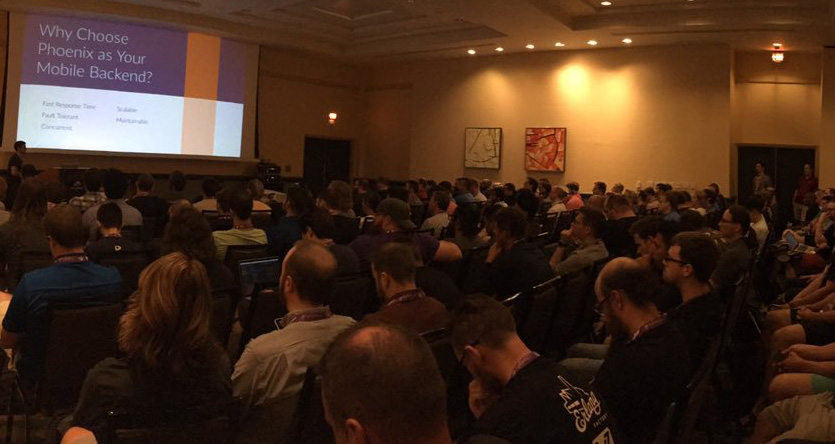Conference Talks and Articles by David Stump
David Stump - Building Programmers Podcast
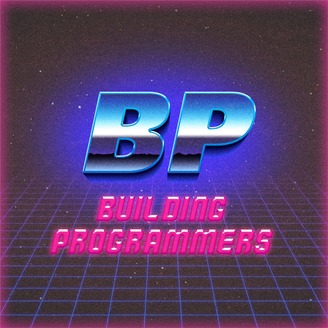
On Building Programmers, Kevin McGladdery interviews software developers about their careers, their current responsibilities, and how they became programmers. Then he makes them play ill-conceived game show games for worthless points! Delightful!
This week, Kevin and David talk about becoming a programmer, fun languages, and the irresistible siren song that emanates from southwestern Ohio. Then they play the hot game 'YCombinator Startup or Star Trek - Deep Space Nine Character'. How does David do? Who is Michael Dorn? Tune in to find out!
Read More »
Using Phoenix with Legacy Rails Applications

Here’s the situation: I love writing Elixir and Phoenix, but many of my clients have existing legacy Rails applications that have been running in production for years. Doing a full rewrite of all of their systems at once is time-consuming, expensive and potentially dangerous. The best-case scenario would be to gradually add or update small features on their existing application utilizing Phoenix behind the scenes. As more and more of these features get updated, the app slowly transforms from a “Rails App with a little bit of Phoenix”, to a “Phoenix App with a little bit of legacy Rails”. The nice part of this approach is that it is easy to experiment with and gradually make changes without introducing more bugs and degrading the overall user-experience of your client’s application. This way we can add value for our client by leveraging an ecosystem with improved power and performance while avoiding disrupting the application flow that users are already familiar with.
Read More »Phoenix Beyond the Browser - ElixirConf 2016
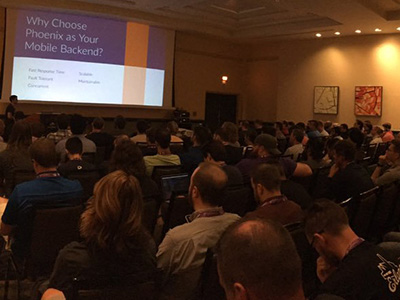
How to Send Email From Your Phoenix App in Under 5 Minutes

Sending scheduled or automated emails from your application is a very common problem with a number of solutions. In this write-up I am going to demonstrate one particularly easy approach to adding email functionality to your Phoenix App. Phoenix is a web framework written in Elixir that is enjoying a meteoric rise in popularity recently. Many people are jumping onto the Phoenix bandwagon for its explicit, non-magical and functional approach to development.
Read More »Swift Extensions
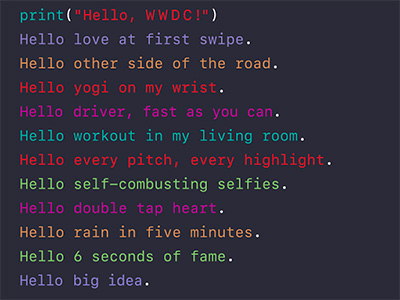
This past Monday, Apple made a shocking announcement. They are moving forward without Objective-C. After the murmuring lessened, Apple went on to demonstrate an attractive, clean and expressive new language called Swift. Once the Taylor Swift jokes had subsided, the developer community seemed genuinely excited about this new look for iOS development. More information about the new language can be found on Apple’s site.
Read More »Fun with Variants and Enums in Rails 4.1

The release of Rails 4.1 this past week included some cool new features two of which are the introduction of enums and variants. Enums give us some syntatic sugar for handling attributes like status, role, etc. Variants allow us to handle separate types of templates from within a respond_to block on a given action. I setup a tiny Rails 4.1 application to demonstrate one possible use for these two new features.
Read More »How to Use Angular and Keep Loving Rails
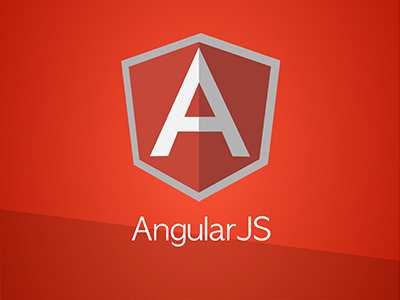
I love writing Ruby and I love using Rails. So when I started looking for a client-side framework to help organize my front-end process and code, I was cautious of frameworks that demanded I abandon my “Rails Way” and adopt their process, style, and approach. I was looking for a framework that added value to my “Rails App”, not a solution that wanted Rails to instead act as a compliment to my client-side app.
Read More »Simple Touch Events in CoffeeScript

I am an avid fan of simple, clean and elegant CoffeeScript (and thus JavaScript of course). On top of your code being more approachable, I love the sense of accomplishment when I find a clean way to solve a problem without immediately jumping to an external library or plugin. Thus, when I was faced with the problem of handling touch events on handheld and tablet devices for our new site, I started with a blank page in my favorite editor.
Read More »Use Git to Manage Your Time

Donec eget ex magna. Interdum et malesuada fames ac ante ipsum primis in faucibus. Pellentesque venenatis dolor imperdiet dolor mattis sagittis. A gem that uses your git commits to manage a Freshbooks timesheet
Read More »A Better Fullscreen Experience in Sublime
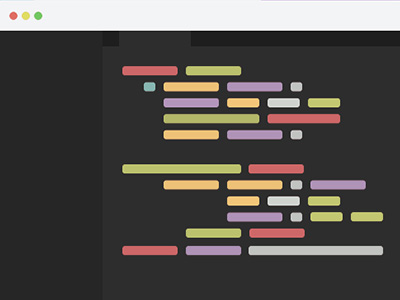
While I love coding with my editor in fullscreen mode, I also enjoy having apps such as Campfire or Rdio accessible on another monitor. One complaint I have had with the default OSX fullscreen mode is that it causes a second monitor to show nothing but the grey textured spaced background. I was thrilled the other day when I discovered a feature in Sublime that allowed me to use a “simple” fullscreen mode which behaves differently than the standard OSX mode. If you add the following to your Sublime preferences:
Read More »A Simple Git Timesheet

At the end of each day, I find myself crawling through the git logs to record my activities for the day on our timesheet software. It eventually occurred to me that with a few super simple arguments passed to the git log command, I could have a basic output of my timesheet for that day.
Read More »